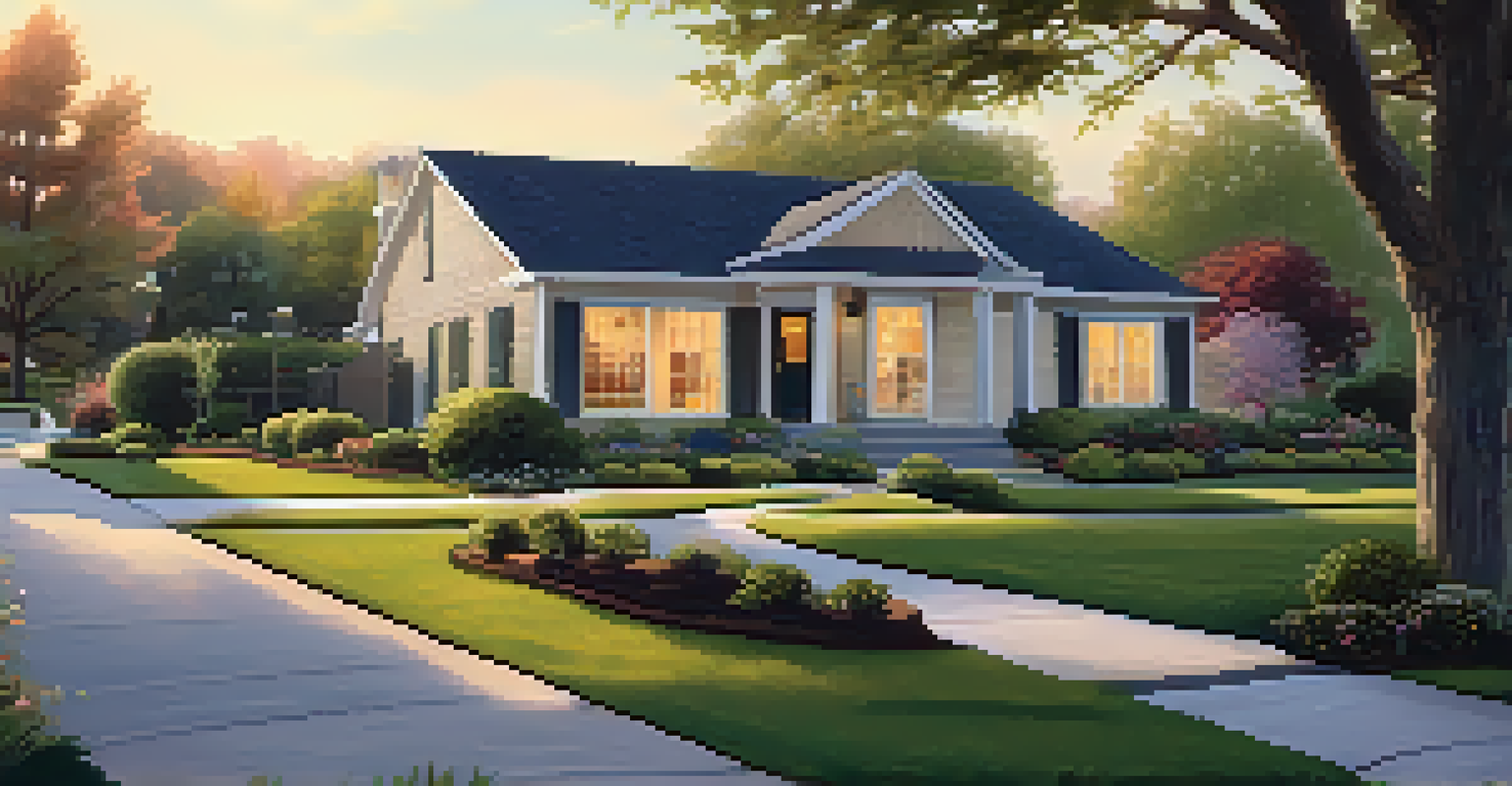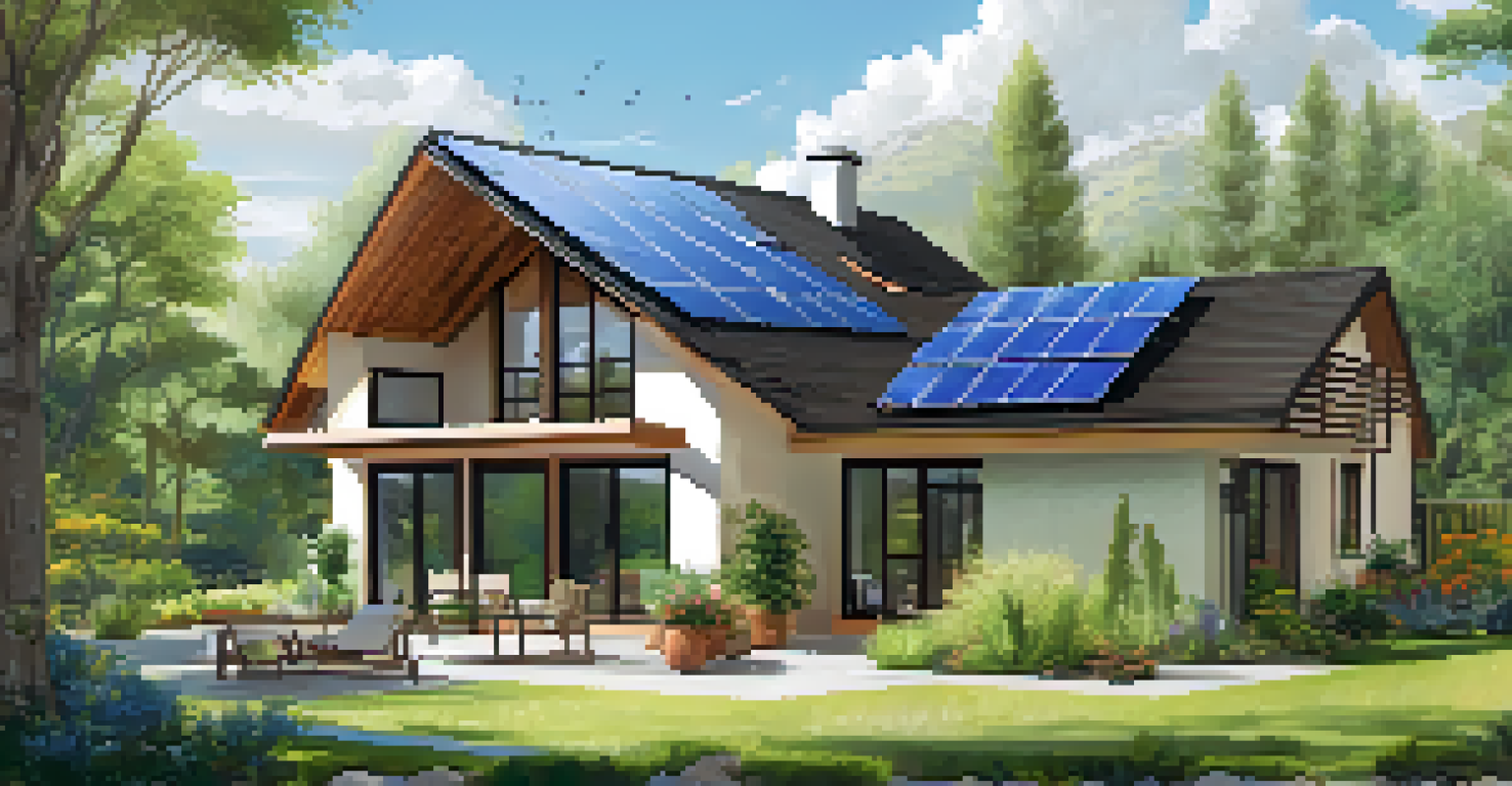Demographic Shifts and Their Impact on Real Estate Trends

Understanding Demographic Shifts and Their Importance
Demographic shifts refer to changes in the characteristics of a population, including age, race, and household structure. These shifts can significantly impact various sectors, particularly real estate. For instance, as millennials enter the housing market, their preferences and needs are reshaping what is deemed desirable in homes.
The future belongs to those who believe in the beauty of their dreams.
Understanding these demographic changes helps real estate professionals anticipate market demands and adapt their strategies accordingly. For example, younger buyers often prioritize urban living with access to amenities, while older generations might prefer suburban settings that offer tranquility.
By paying attention to these trends, real estate agents and developers can better align their offerings with what buyers are looking for, ultimately driving sales and growth in the market.
The Rise of Urban Living Among Younger Generations
Urban living has become increasingly popular among younger generations, especially millennials and Gen Z. These groups are attracted to the vibrancy of city life, with its diverse job opportunities, entertainment, and social activities. As a result, urban areas are witnessing a surge in demand for apartments and condos.

This shift toward urban living is influencing real estate developers to focus on creating mixed-use properties that blend residential, commercial, and recreational spaces. For instance, developments that incorporate parks, shops, and restaurants are particularly appealing to this demographic.
Urban Living Gains Popularity
Younger generations are increasingly drawn to urban living, prompting real estate developers to create mixed-use properties that cater to their lifestyle.
As cities evolve to meet the needs of younger residents, the real estate market must adapt, leading to innovative designs and a reimagining of urban spaces.
Aging Population and Its Impact on Housing Needs
As the population ages, the demand for different types of housing is changing. Older adults often seek homes that are more accessible and require less maintenance. This trend is prompting a rise in demand for single-story homes, retirement communities, and assisted living facilities.
In the middle of every difficulty lies opportunity.
Real estate developers are recognizing this need and are beginning to create age-friendly communities that cater specifically to seniors. These developments often include features like ramped entrances, wider doorways, and proximity to healthcare facilities.
Moreover, understanding the preferences of older adults can help real estate agents market homes more effectively, tapping into this growing demographic with tailored solutions.
Cultural Diversity and Its Influence on Housing Preferences
The increasing cultural diversity of the population is another key factor affecting real estate trends. Different cultural backgrounds come with unique preferences regarding home styles, neighborhood amenities, and community engagement. For instance, some cultures place a high value on multi-generational living, which may lead to a demand for larger homes.
This diversity not only influences the types of homes being built but also the locations where people want to live. Real estate professionals who understand these cultural nuances can better serve their clients and identify emerging market opportunities.
Aging Population Shifts Housing Needs
As the population ages, there is a growing demand for accessible and low-maintenance housing options tailored for older adults.
By embracing cultural diversity in housing design and community planning, developers can create environments that foster inclusivity and meet the needs of a varied population.
Remote Work Trends Changing Housing Demand
The rise of remote work, accelerated by the pandemic, has dramatically shifted housing demand. Many individuals and families are now prioritizing home office space and seeking homes in suburban or rural areas, away from the hustle and bustle of city life. This trend has led to increased interest in properties that offer more square footage and outdoor space.
As people enjoy the flexibility of working from home, real estate professionals must adapt to this new demand by highlighting homes with desirable office setups and quiet neighborhoods. Additionally, this shift may lead to a resurgence in smaller towns that were previously overlooked.
Ultimately, the growth of remote work has redefined what many buyers consider essential in a home, prompting the real estate market to evolve accordingly.
The Role of Technology in Real Estate Marketing
As demographic shifts occur, technology plays a vital role in how real estate is marketed. With younger generations being digital natives, the use of social media, virtual tours, and online listings has become essential for reaching potential buyers. This tech-savvy approach allows for greater engagement and a more personalized experience.
Real estate agents are leveraging platforms like Instagram and TikTok to showcase properties in innovative ways, helping to attract a younger audience that values authenticity and creativity. High-quality visuals and interactive content can significantly enhance a property's appeal.
Sustainability Drives Real Estate Trends
Younger consumers are prioritizing eco-friendly features in homes, leading developers to adopt sustainable building practices and energy-efficient technologies.
By embracing technology and adapting marketing strategies to fit the preferences of different demographics, real estate professionals can stay competitive in a rapidly changing landscape.
Sustainability Trends Driven by Changing Consumer Values
Another significant trend linked to demographic shifts is the growing emphasis on sustainability and eco-friendly living. Younger generations, in particular, are increasingly concerned about environmental issues and are looking for homes that reflect their values. This has led to a rise in demand for energy-efficient homes and sustainable building practices.
Developers are responding by incorporating green technologies such as solar panels, energy-efficient appliances, and sustainable materials in their projects. These features not only appeal to environmentally conscious buyers but can also lead to long-term savings on utility bills.

As sustainability becomes a key selling point, real estate professionals who can highlight these eco-friendly aspects will find themselves better positioned in the market.